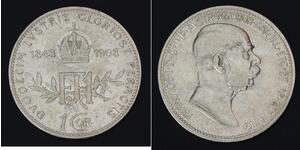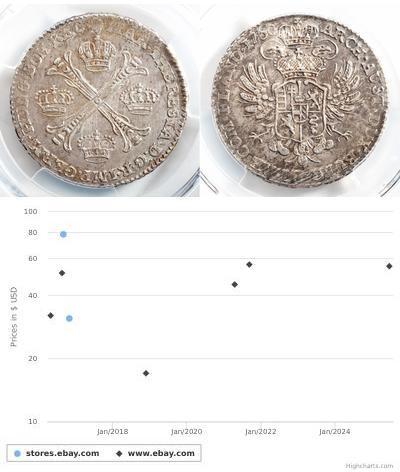(Vendida por $143.0)
1774, Saxe-Gotha-Altenburg, Ernest II. Scarce Silver 1/3 Thaler Coin. VF
Condition: VF
Mint year: 1774
Mint Place: Gotha
Denomination: 1/3 Thaler
Reference: KM-329 ($175 in VF!). R!
Weight: 13.76gm
Diameter: 34mm
Material: Silver
Obverse: Draped bust of the duke right. Mint master's initials (L.G.K.) below.
Legend: ERNESTVS D.G. GOTHAN . SAXOVM DVX
Reverse: Crowned oval coat-of-arms wihtin wreath. Date (17-74) split above.
Legend: XXX . EINE FEINE MARK .
Saxe-Gotha-Altenburg (German: Sachsen-Gotha-Altenburg) was a duchy ruled by the Ernestine branch of the House of Wettin in today's Thuringia, Germany.
It was nominally created in 1672 when Frederick William III, the last duke of Saxe-Altenburg, died and Ernest I, Duke of Saxe-Gotha (who had married Frederick William's cousin, Elisabeth Sophie), inherited the major part of his possessions. It was common for the Ernestine duchies to merge and split; Ernest's combined duchy was divided again after his death in 1675, and the Duchy of Saxe-Gotha-Altenburg proper came into existence in 1680 with the completion of this division and the accession of his eldest son, Frederick to the subdivision centered on the towns of Gotha and Altenburg.
Frederick's residence remained at Schloss Friedenstein in Gotha. He decisively secured his family's possessions with the implementation of the primogeniture in 1685. Nevertheless when the last dukes Emil August and his brother Frederick IV had both died without male heirs, the house of Saxe-Gotha and Altenburg became extinct in 1825 and quarrels arose between the three remaining Ernestine lines about the succession.
As a result of an arbitration issued by King Frederick Augustus I of Saxony in 1826, the Ernestine duchies were rearranged and Saxe-Gotha-Altenburg was again split:
- Saxe-Gotha passed to the Duchy of Saxe-Coburg-Saalfeld, which had to cede Saxe-Saalfeld to Saxe-Meiningen. The territories constituted the newly created Duchy of Saxe-Coburg and Gotha.
- Saxe-Altenburg was given to the Duke of Saxe-Hildburghausen, who in turn passed his own domain to Saxe-Meiningen and again assumed the title of a Duke of Saxe-Altenburg.
After the abolition of German monarchies in the course of the German Revolution of 1918–1919, all former duchies became part of the newly created state of Thuringia in 1920.
em>.
Ernest II, Duke of Saxe-Gotha-Altenburg (Gotha, 30 January 1745 – Gotha, 20 April 1804), He was the third but second surviving son of Frederick III, Duke of Saxe-Gotha-Altenburg and Luise Dorothea of Saxe-Meiningen. The death of his older brother Frederick in 1756 made him the heir to the duchy of Saxe-Gotha-Altenburg.
The Duchess Luise Dorothea was intensely worried about the training of her surviving sons, Ernest and her youngest son August, and had them educated by a selected group of teachers. During 1768–1769 both princes took an educational journey to the Netherlands, England and France, and Ernest met important people in Politics, Science and Arts.
In 1772 his father died, and Ernest inherited the duchy of Saxe-Gotha-Altenburg. He was interested as liberal and enlightened rulers versatile artistically and scientifically and developed a purposeful regime. He promoted the Educational System, the Economy, Theatre, Art collections and Libraries as well as the Natural Sciences in his duchy, which reached thereby in the top place of the Saxony Duchies in Thuringia. Privately, he was interested particularly in Astronomy and Physics. He appointed competent specialists in all these areas like mechanic and clockmaker Johann Andreas Klindworth, to whom he granted the title of court mechanic.
For his special interests he had the services of the important astronomer Franz Xaver von Zach for Gotha. With him, he established the Observatory of Gotha (Sternwarte Gotha), which developed into a European centre of Astronomy. His will stated that this institution should represent the only visible indication of his existence. It succeeded to such an extent, that Gotha despite its size was thought of as a place that important people of the time should visit. One such person was Goethe who visited several times.
Since 1774 he was a Freemason in the Zinnendorf system and member of the Gotha Lodge Zum Rautenkranz; in 1775 was appointed Grand Master of the Landesloge of Germany (Zinnendorf system). In 1783 Ernest became a member of the Bavarian Illuminati under the name of Quintus Severus and/or Timoleon, and in 1784 he was created Supervisor of Abessinien (a name for Upper Saxony). In 1787, he granted Adam Weishaupt, the founder of this secret society, asylum in Gotha. As a freemason he was buried wrapped in a white cloth on the park island.
Only 1$ shipping for each additional coin purchased!

2 Mark Reino de Sajonia (1806 - 1918) Pl ...
grupo tiene 26 monedas / 26 precios
Add coin to this group

1 Thaler Electorate of Bavaria (1623 - 1 ...
grupo tiene 49 monedas / 47 precios
Add coin to this group
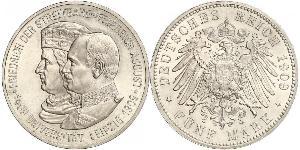
5 Mark Reino de Sajonia (1806 - 1918) Pl ...
grupo tiene 48 monedas / 48 precios
Add coin to this group

2 Stiver Sri Lanka / Reino Unido de Gran ...
grupo tiene 5 monedas / 5 precios
Add coin to this group

2 Lira Kingdom of Italy (1861-1946) Plat ...
grupo tiene 28 monedas / 24 precios
Add coin to this group

1/2 Crown Reino de Inglaterra (927-1649, ...
grupo tiene 21 monedas / 15 precios
Add coin to this group
1 Corona Imperio austrohúngaro (1867-1918) Plata Franz Josep ...
grupo tiene 25 monedas / 17 precios
⇑

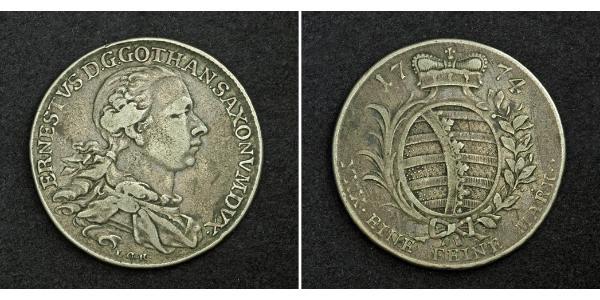





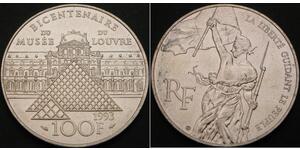


-300-150-AeIKqUpY7NEAAAFhroEy54Nz.jpg)
